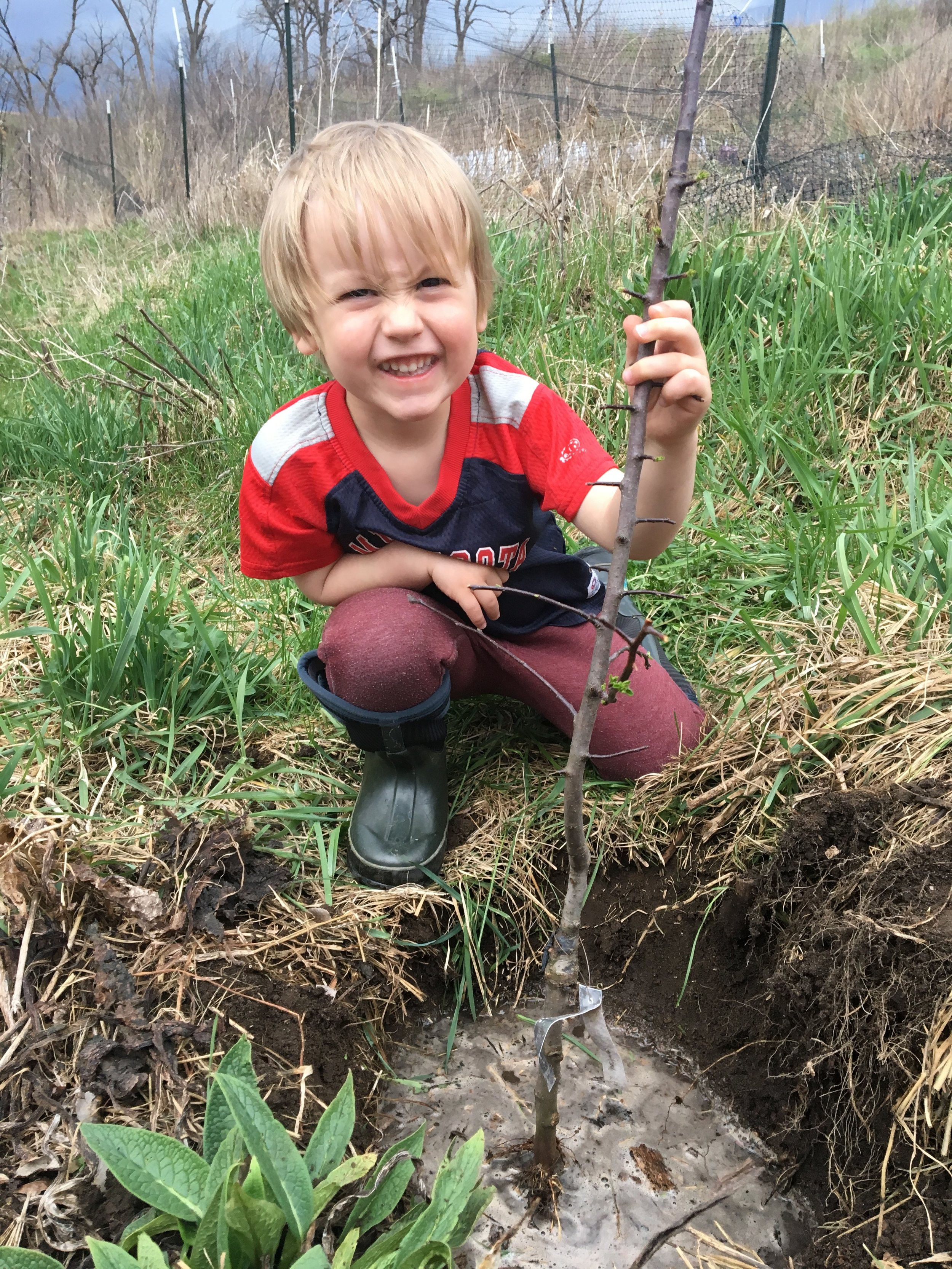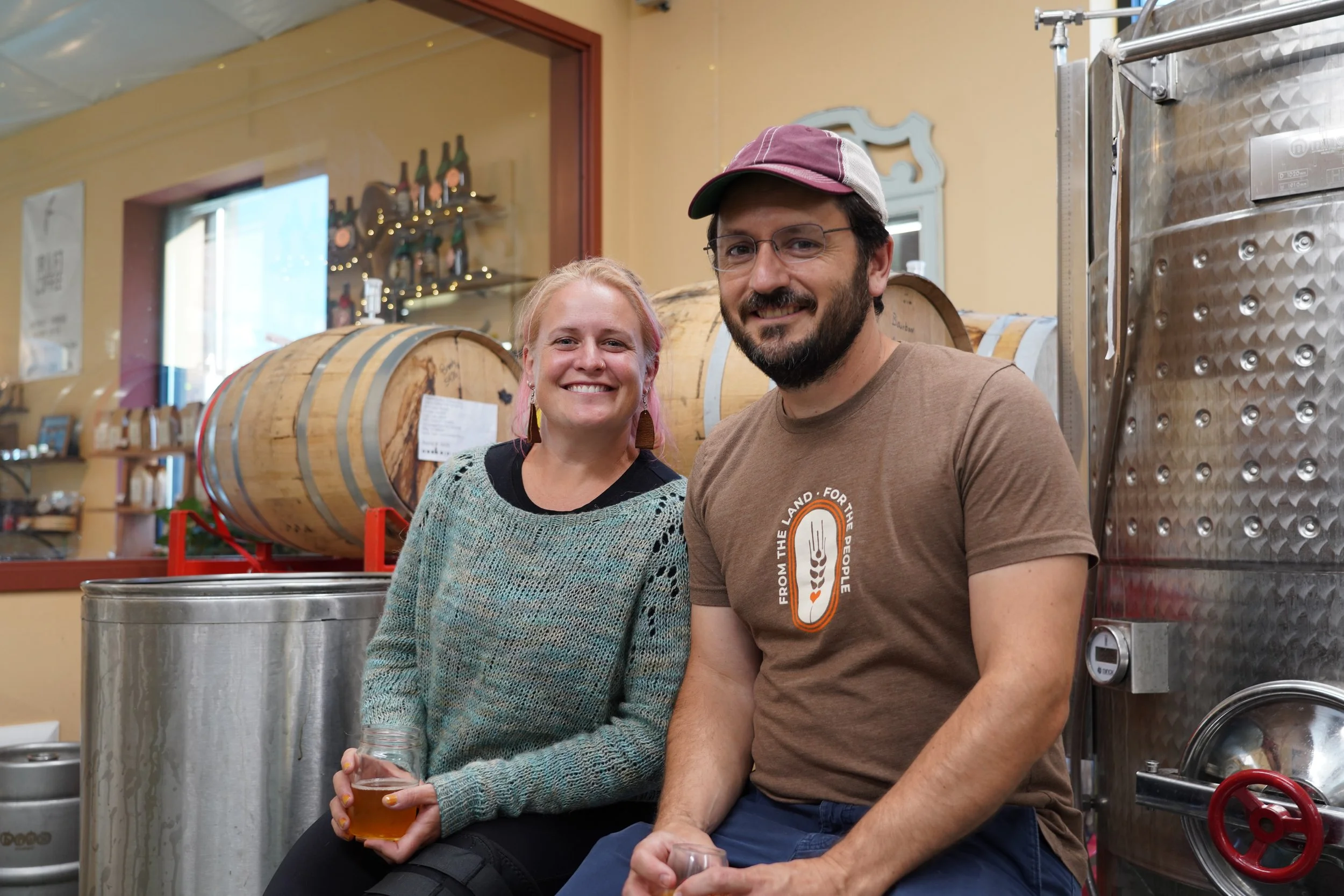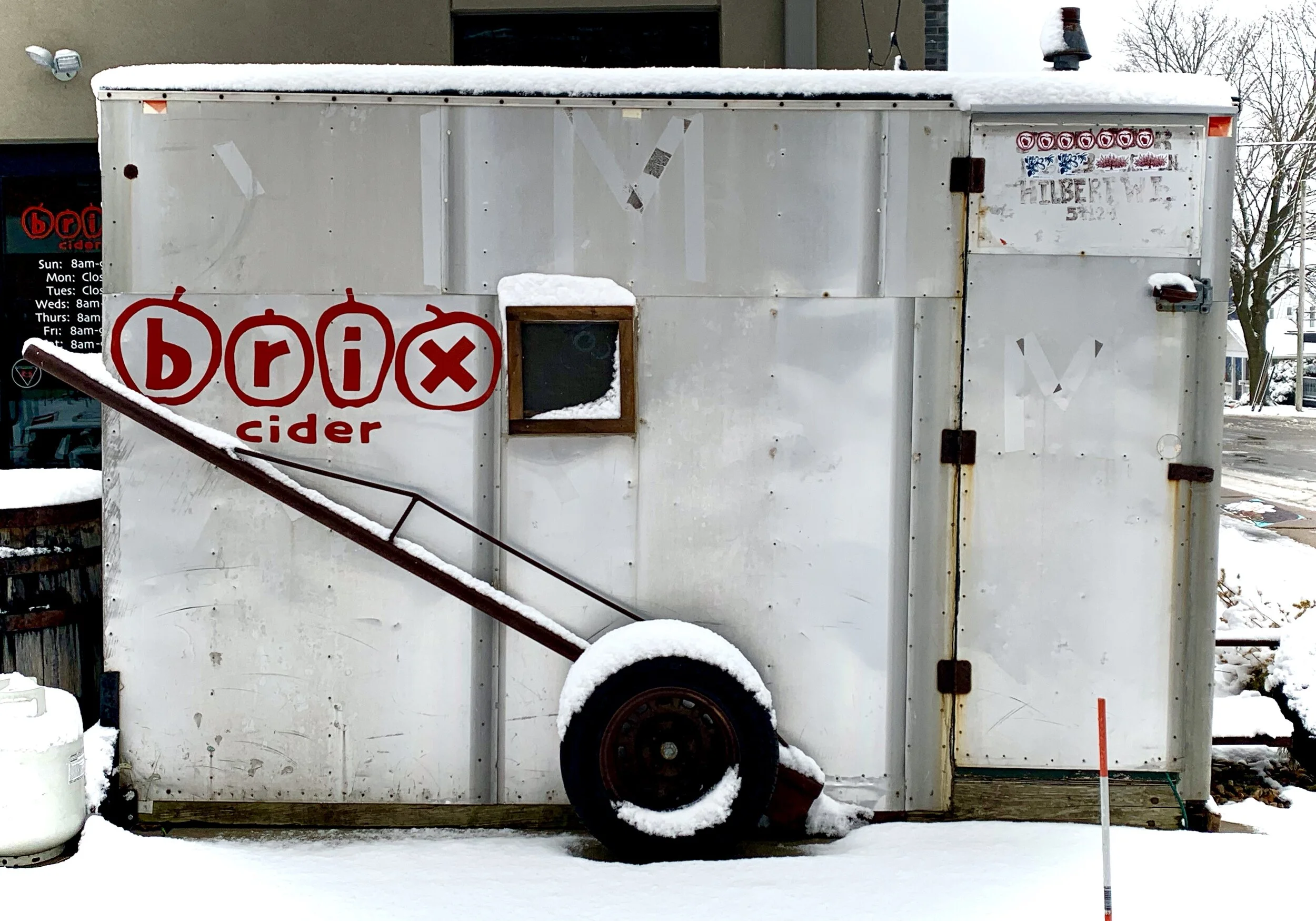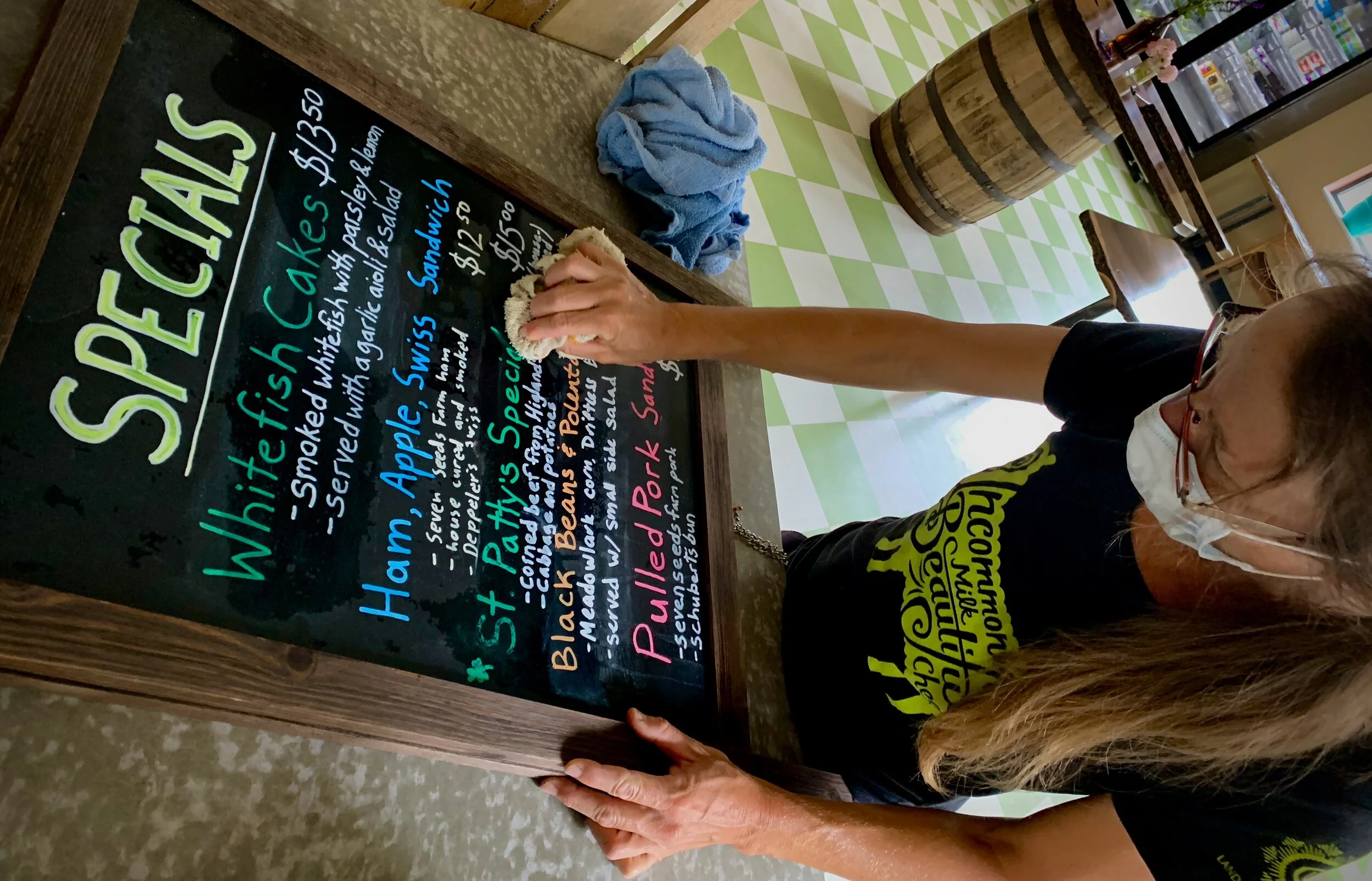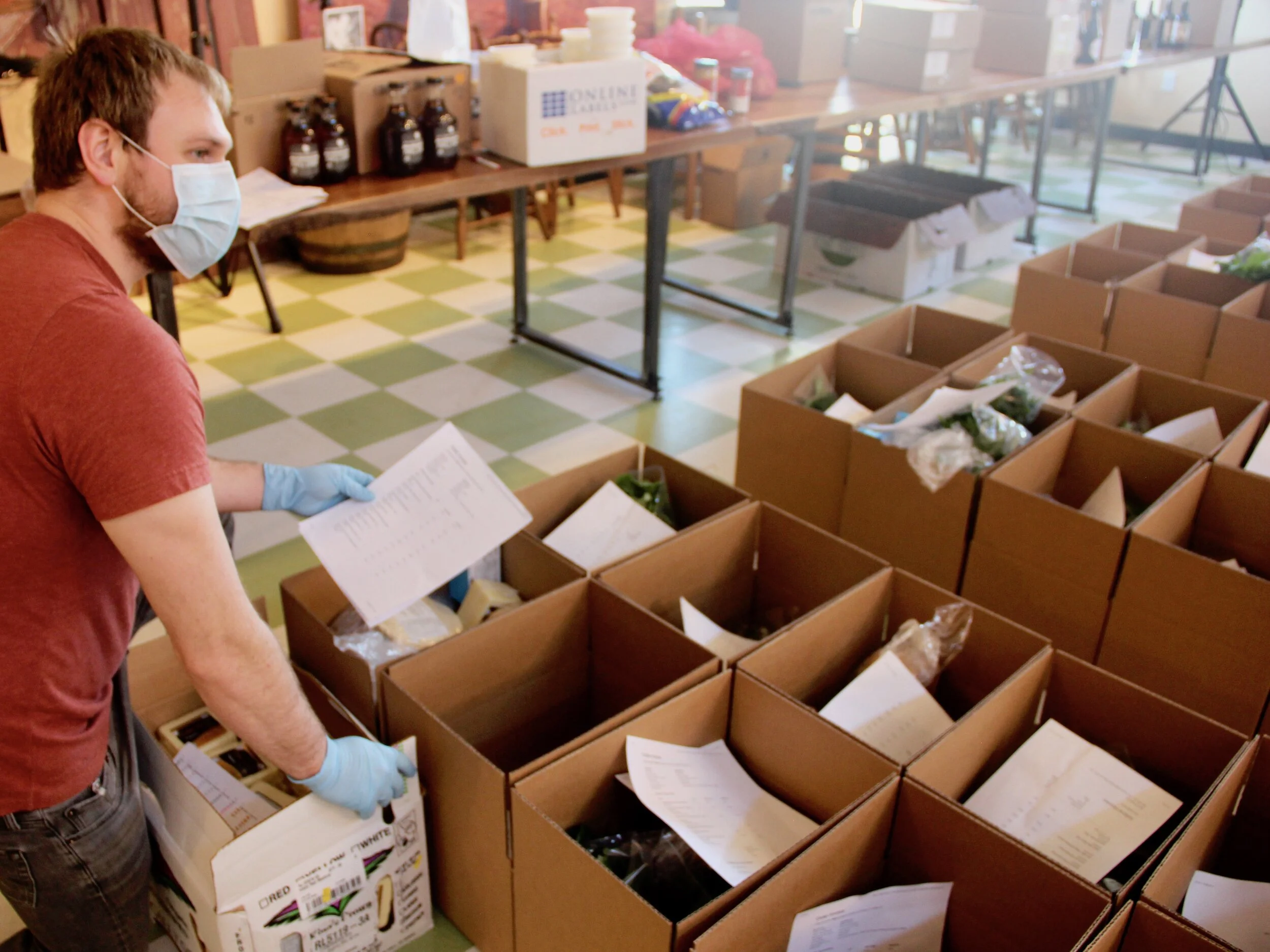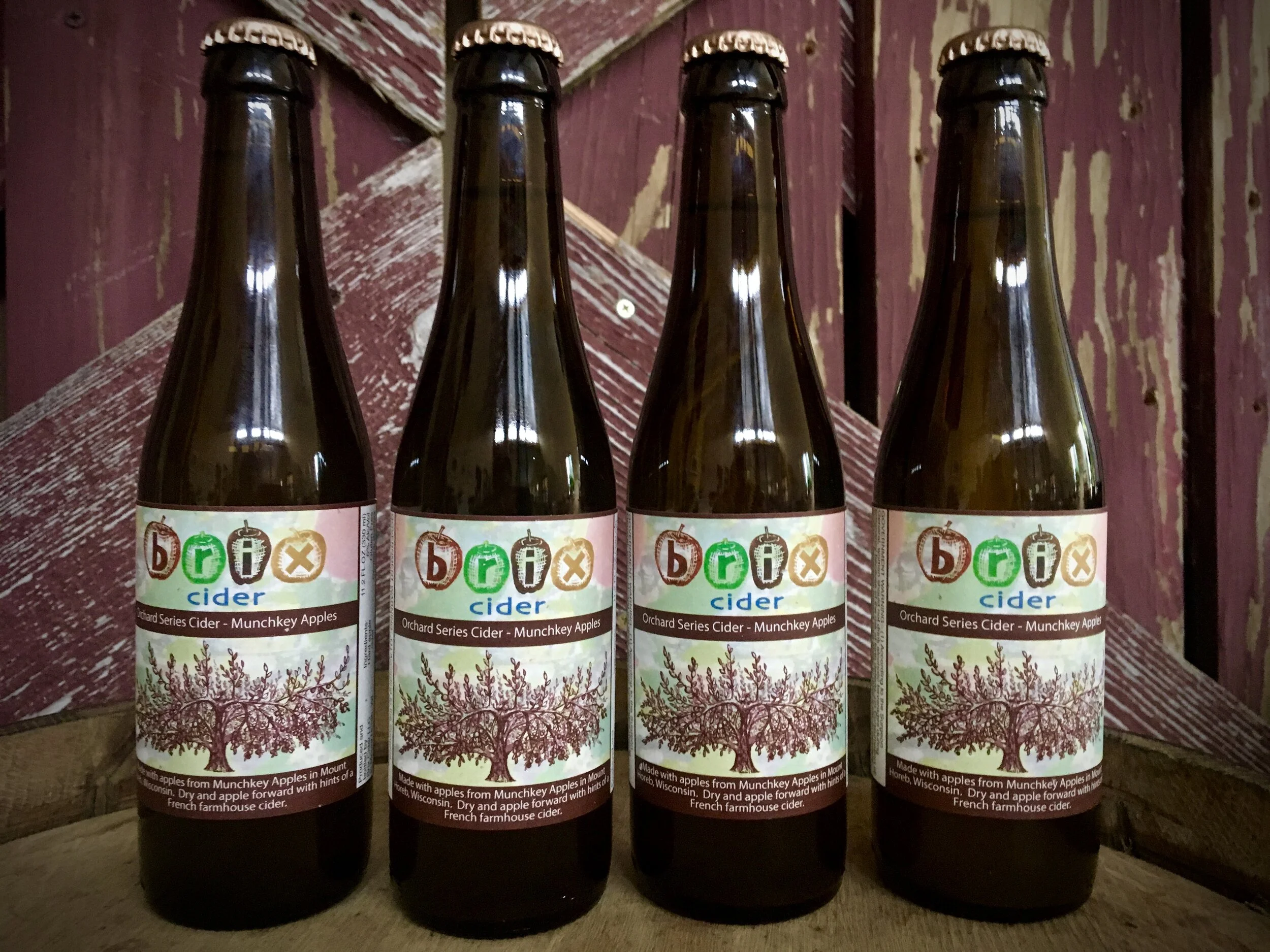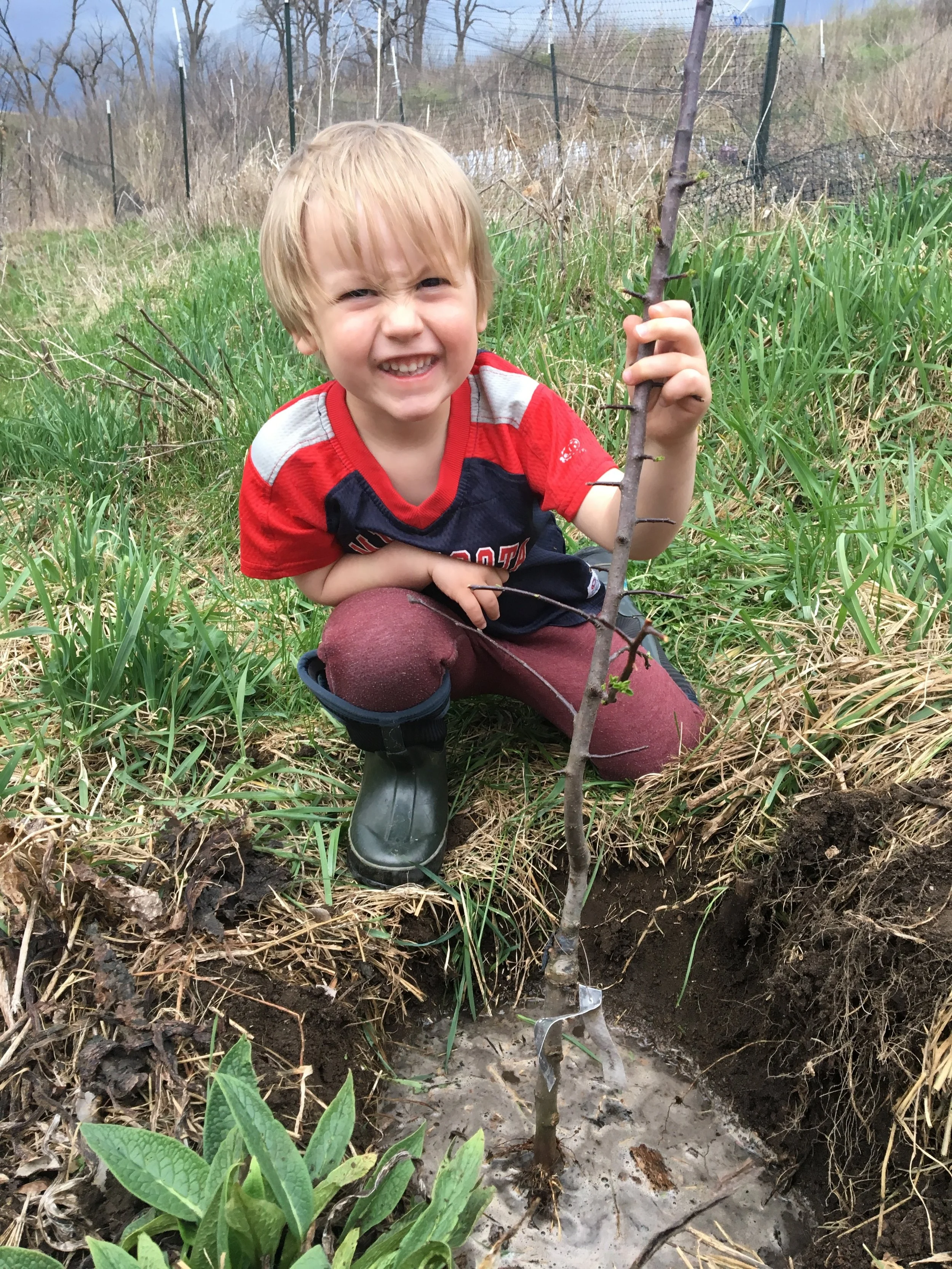How to Plant a Tree
It’s Earth Day! Get yourself outside and plant a tree. It’s really not that hard. With any luck you can enjoy watching it grow, and if it’s a fruit tree, hopefully it will give you loads of fruit over the years.
Here’s a video and a step by step guide to help you plant your tree:
Step One: Get yourself a tree to plant. Try to find something you like. A lot of garden stores sell bare root trees that you can plant out in the spring. If you’re selecting the tree yourself, look for something with healthy looking, spreading roots. If you’re planting a fruit tree and you’re not a professional, you should probably try to pick a variety that is disease resistant (e.g. Liberty or Gold Rush for apples). Also, always make sure you’re picking something suitable for your climate. Most tree catalogues will let you know the appropriate growing zones and cold hardiness of the trees you’re buying. Another thing to pay attention to in planting a tree is the size you’re looking for. A lot of fruit trees come in dwarf, semi-dwarf, semi-standard, and standard sizes, which can range from and 8 feet tall tree to 30 feet tall. It’s easy to underestimate how big a tree can actually get, so pay attention to things like power lines and other obstacles, and pick what works for your space.
Step Two: Find a good place to plant your tree. Fruit trees like apples tend to prefer fairly deep, well drained soil, preferably with a mix of sand, silt, and clay. Naturally, trees also like the sun, so find the best place you can. Also, try to avoid planting near black walnut trees as these can kill your apples. If you don’t have the perfect spot, don’t sweat it. Try planting a tree anyway, because it might still do okay. If your soil really isn’t ideal, ask your garden store expert for a species that might still be able to thrive there. Adding compost and mulch over the years can also improve your soil, making it possible to plant what you like.
Step Three: Dig a hole. Make sure you dig a hole that’s deep enough and wide enough to accommodate all of your trees roots, with a little room to spare.
Above: Teddy digging a hole in 2018
Step Four: Put some water in your hole. Filling the hole about half way with water is a good rule of thumb. You want your tree’s roots to stay nice and wet during transplant. It’s also a good idea to keep your tree’s roots covered, damp, and out of the sun before you plant it so the roots don’t dry out.
Above: Teddy filling a hole with water in 2017
Step Five: Put your tree in the hole. Make sure to spread the roots around. If you’re planting a fruit tree it will likely have a graft union. This is a bulging spot near the base of the stem where the tree was grafted. It can also be a spot near the base where the stem angles out from a bud union. Make sure that this graft union or bud union is at least a few inches above the surface of the ground. If you bury it by accident, you might end up getting a full, standard-sized tree instead of the smaller tree that you may have been looking for.
Above: Teddy putting a tree in a hole today
Step Six: Put the soil back in the hole. When you put the soil back in, make sure that you’re not squishing all the roots together. You want them to stay spread out. Avoid putting grasses, weeds, and other plants back in the hole where they might grow and compete with your young tree for water and nutrients. Once you have the soil back in the hole, press it down fairly firmly, but don’t force it down so much that you might damage the roots.
Step Seven: Mulch your tree. Young trees are vulnerable, and their growth can be easily stunted by competing grasses and weeds. It’s good to mulch your tree, especially in its first few years of growth in order to minimize this competition with other plants. We usually use a layer of cardboard covered with a layer of wood chips to smother plants within a couple feet of the base of the tree.
Above: In addition to mulching around the base of young trees, we also plant beneficial plants like comfrey (the leafy plant near our trees). Comfrey can smother other weeds, and can provide nutrients for the apples when the leaves are cut back. It’s also great for pollinators.
Step Eight: Stake your tree. Young trees could use a little support, and some dwarf trees could use support throughout their lifetime. A stake can protect your tree from wind damage and help it develop a productive growth form. For dwarf and semi-dwarf trees, the stake can help keep the tree upright when it’s bearing a heavy load of fruit. We tend to stake our trees with electrical conduit, but anything sturdy that you pound into the ground will probably work. Most modern orchards have now gone to a trellis system to support rows of tightly spaced dwarf trees.
Step Nine: Take care of your tree. Make sure it stays watered, especially while it’s still young. Also, try to keep weeds from competing with it. Pest and disease management for fruit trees can be a complex endeavor that can take years to learn. However, if you start by selecting disease resistant varieties and if you take care of your tree’s basic needs, your tree will be healthier and better equipped to use its own immune defenses. If you pay attention to your tree as it grows, hopefully you can spot any potential problems as they arise and then identify solutions through a little basic research.
Step Ten: Protect your tree. Deer and voles can cause a lot of damage for young trees, especially over winter. Fencing or other protection from deer and tree guards that wrap around the base of the tree for voles, can keep your tree safe.
Here’s a video that covers most of the steps above:
Good luck and happy planting!



